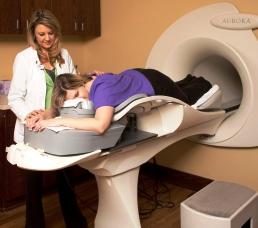 It is not unusual for women considered at high risk for breast cancer to be referred for an MRI following their annual mammography as a part of their screening program.
It is not unusual for women considered at high risk for breast cancer to be referred for an MRI following their annual mammography as a part of their screening program.
High-risk women, such as those with risk-associated BRCA mutations, often enter screening programs at age 25 to 30, when breast tissue is more dense and less effectively screened by mammography alone.
A research study of women at elevated breast cancer risk found that 42.1% refused an additional MRI screening as part of a clinical trial of mammography and ultrasound screening. These results surprised researchers who shared that these results suggested that patient acceptance has been overestimated for breast MRI screening,
According to researchers, Wendie A. Berg, MD, PhD, of Johns Hopkins, and colleagues, women may refuse an MRI as part of their screening program, largely because of fear and inconvenience.
Berg’s group found that 25.4% of women approached cited claustrophobia as the reason for turning down MRI screening. Travel and time required accounted for another 20% of rejections.
Berg’s study — ACRIN 6666 — had previously shown improved diagnostic yield from adding MRI to mammography and ultrasound, with an absolute 56% increase in cancer detection over the two together.
All participants in the trial had at least heterogeneously dense breasts and at least an intermediate risk of breast cancer.
Researchers said they were surprised to find that only 703 of the 1,215 eligible women (57.9%) accepted when offered a MRI.
Berg’s group looked into the reasons for the poor acceptance rate finding in addition to claustrophobia:
* Time constraints or other priorities (18.2%).
* Their physician would not provide a referral, did not believe MRI was indicated, or both (9.2%).
* Lack of interest (7.8%).
* Medical intolerance to MRI (7.6%).
* Not wanting to undergo intravenous injection (5.7%).
* Concern about the additional biopsy or other procedures that might be required after MRI (5.3%).
* MRI scheduling constraints (4.1%).
* Travel required for MRI (2.2%).
* Gadolinium-related risks or allergies (1.4%).
* Unknown reasons (1.2%).
For women who are claustrophobic or otherwise unwilling to have MRI screening, Berg’s group recommended supplementing mammography with ultrasound instead.
 It is not unusual for women considered at high risk for breast cancer to be referred for an MRI following their annual mammography as a part of their screening program.
It is not unusual for women considered at high risk for breast cancer to be referred for an MRI following their annual mammography as a part of their screening program.
